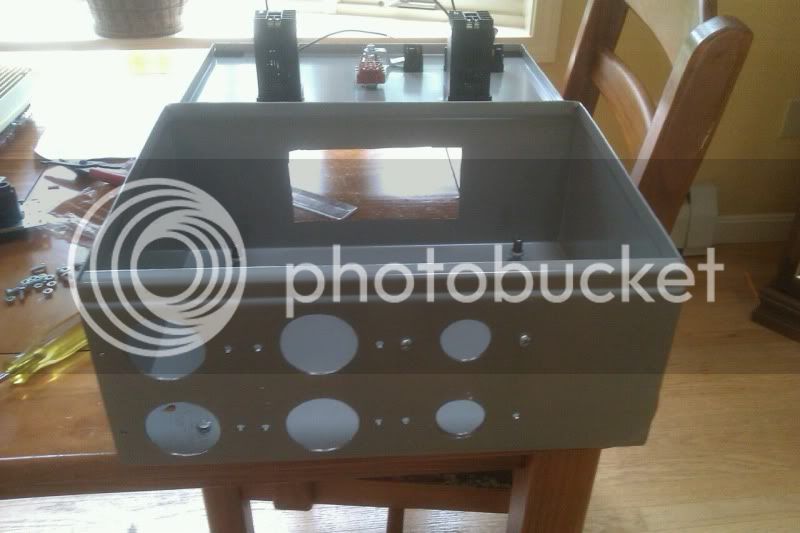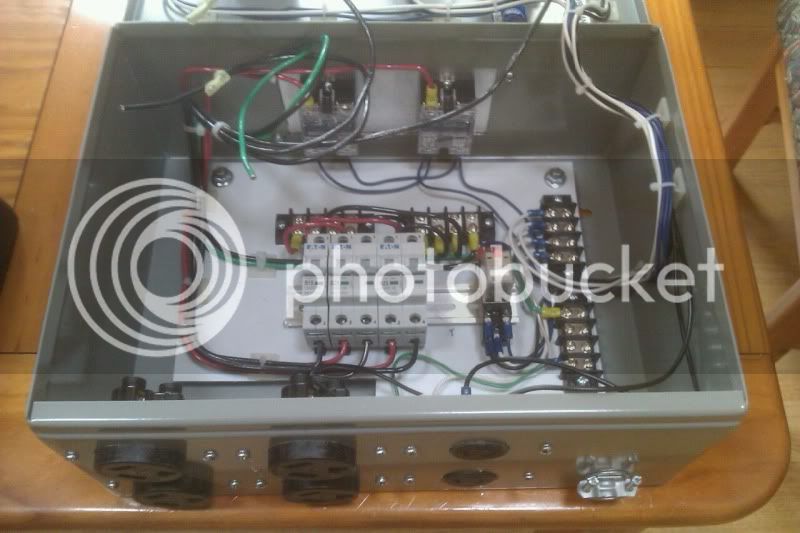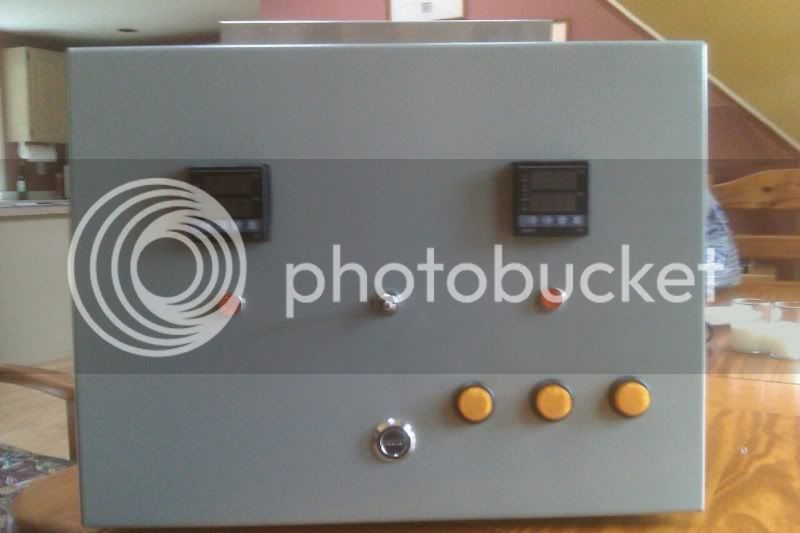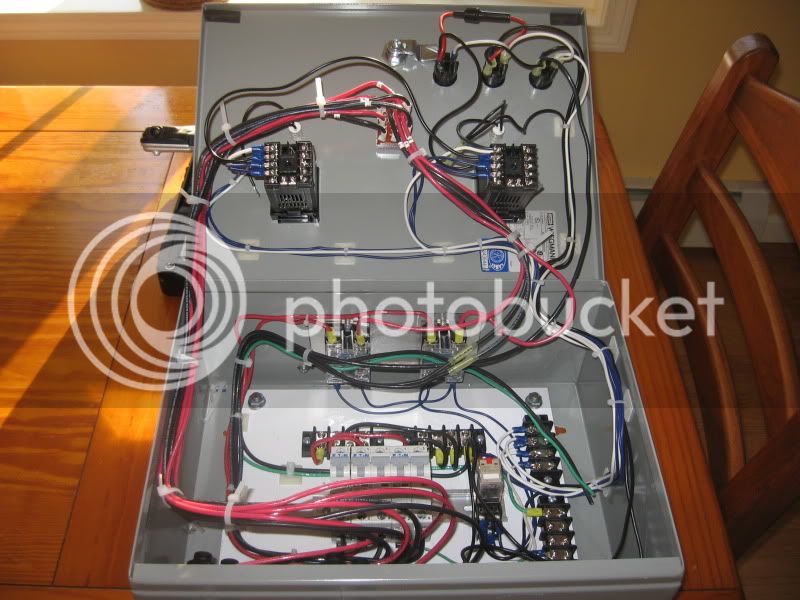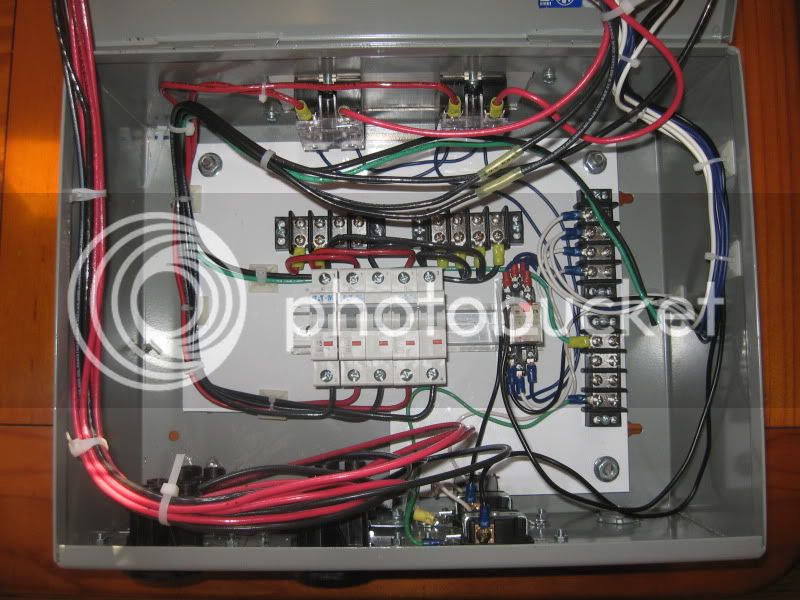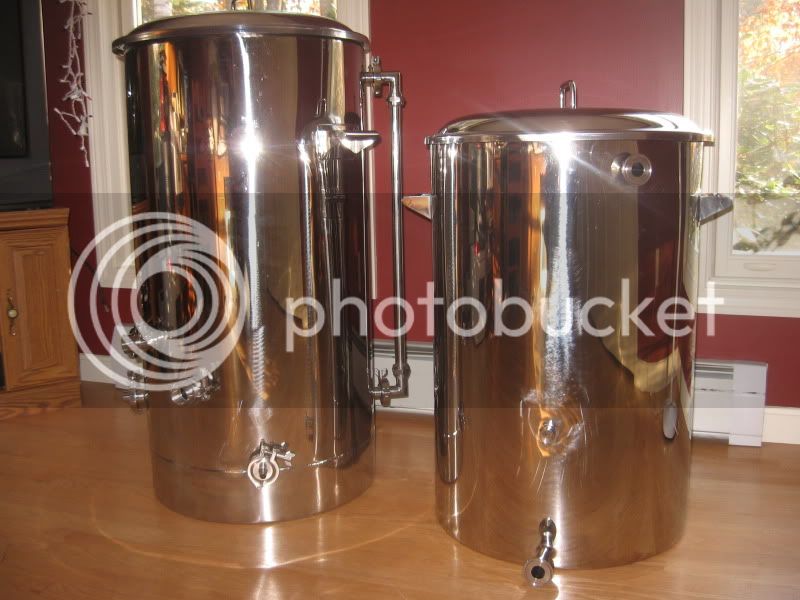cruelkix
Well-Known Member
mateomtb,
Thanks.
You do realize that if you intend to power the HLT and Boil at the same time, you need to have at least 100A 240V GFCI protected power available to your controller?
Basically, you would be running 22,000W plus pumps and PIDs.
I'm not sure going to a 100A 240V GFCI is the most economical way of doing this. I'm currently working on a set up to run 3 x 5500W elements in both my HLT AND my BK. So I'm pulling 33,000W plus pumps an PIDs (which in my case is a touchsreen computer and a LabJack). This lands me at 137 amps + other crap that adds up to like 10 amps. I figure with a 200 amp service to the building (which shouldn't be too difficult to get) I can split the heating element requirements into 3 x 60 amp GFCI breakers as this is WAY cheaper they trying to buy componenets that can handle 100A+.
All 3 60 amp GFCIs will be run into my panel and power will be distributed from there.
So, Mateomtb, I would think going to 2 x 60 amp GFCIs for your 2 kettles would be a cheaper route. P-J, you seem to have some good knowledge on this stuff. Would you agree or disagree?








